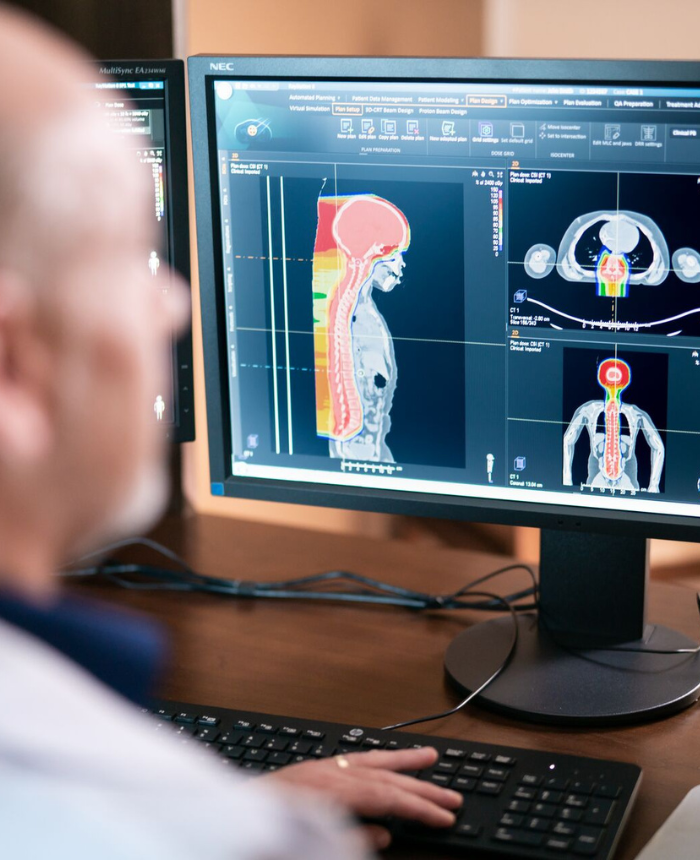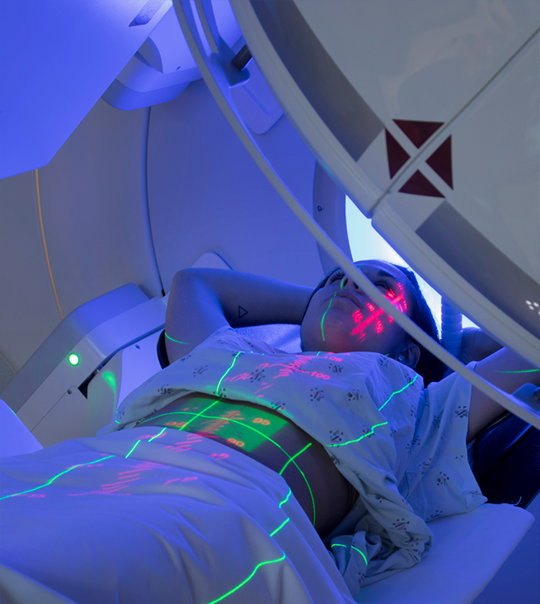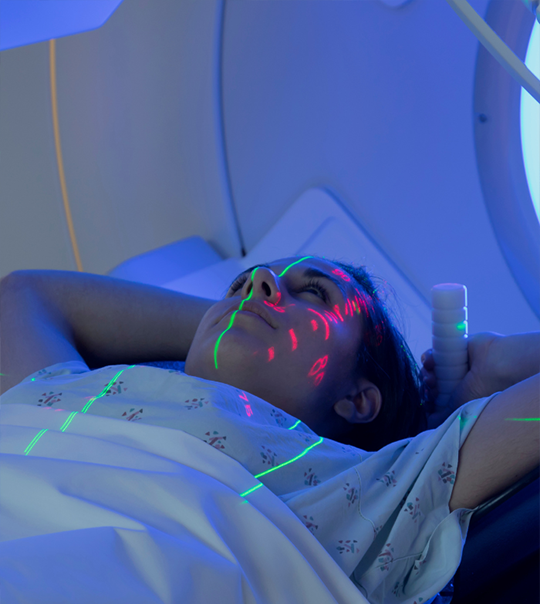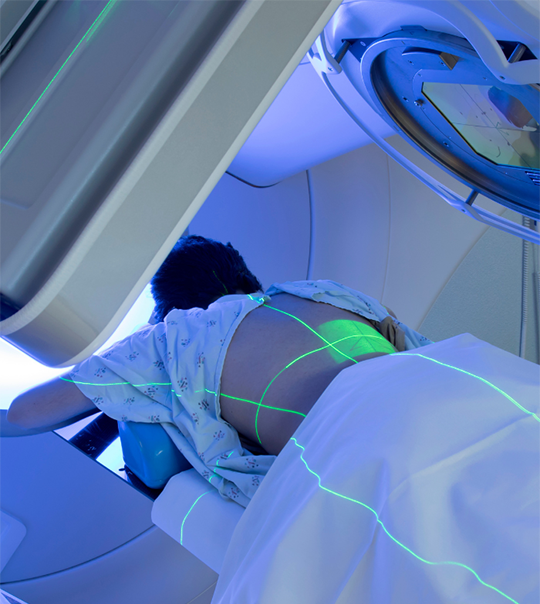
CT Simulation
Computer tomography simulation, or CT simulation, is the first step in the radiation therapy process. It allows your doctor to plan for your upcoming treatment by providing a 3-D model of your tumor and its location in your body. This model allows the cancer specialists to design a treatment plan specifically for you based on the shape, size, and location of your tumor.
We use the scans from CT simulation alongside treatment planning software to determine the safest and most effective way to deliver radiation therapy.
What can you expect during CT simulation?
You may be required to do some preparation before your CT simulation. We’ll provide you with instructions based on the physician’s orders. Depending on your tumor location, the physician may require you to have a full or empty bladder, eat a certain diet, or take certain medications. Females in childbearing age may be asked to complete a pregnancy test.
At the time of simulation, a personalized treatment position will be created using immobilization devices such as molds, casts, headrests, and other equipment depending on your tumor’s location. Small black dots the size of a pinpoint will be tattooed on your skin. They are used as reference points to ensure that you are aligned in the exact same position for each radiation therapy session.
How long does CT simulation take?
CT simulation can take up to an hour to complete. The carbon fiber tables are hard to ensure reproducibility of your position for daily treatments. If you have any issues with lying flat or raising your arms, you should let your physician know so the team can provide modifications to the equipment to create a tolerable position.
I completed my CT simulation… now what?
CT simulation is the first step to your radiation therapy journey. What happens next depends on your specific therapy type—select yours below to find out what to expect.
Image-guided radiation therapy (IGRT)
IGRT combines 3-D images with 3D or intensity-modulated radiation therapy to pinpoint and treat cancerous tumors.

Intensity-modulated radiotherapy (IMRT)
IMRT is an advanced form of external radiation treatment that allows precise targeting of tumor cells.

Image-guided radiation therapy (IGRT)
IGRT combines 3-D images with 3D or intensity-modulated radiation therapy to pinpoint and treat cancerous tumors.

Intensity-modulated radiotherapy (IMRT)
IMRT is an advanced form of external radiation treatment that allows precise targeting of tumor cells.

Stereotactic body radiotherapy (SBRT)
SBRT is an advanced type of radiation therapy that delivers high doses of radiation aimed at a very targeted area of the body.

3-D conformal radiation therapy
3-D CRT uses technology to capture 3D representations of the tumor and surrounding organs.

Stereotactic body radiotherapy (SBRT)
SBRT is an advanced type of radiation therapy that delivers high doses of radiation aimed at a very targeted area of the body.

3-D conformal radiation therapy
3-D CRT uses technology to capture 3D representations of the tumor and surrounding organs.

Schedule Your Appointment Today
If you are referred for radiation therapy during your cancer care, you get to choose where to receive treatment. We are here to support and encourage you—call us today to schedule your first appointment with one of our radiation oncologists at the cancer center nearest to you.
